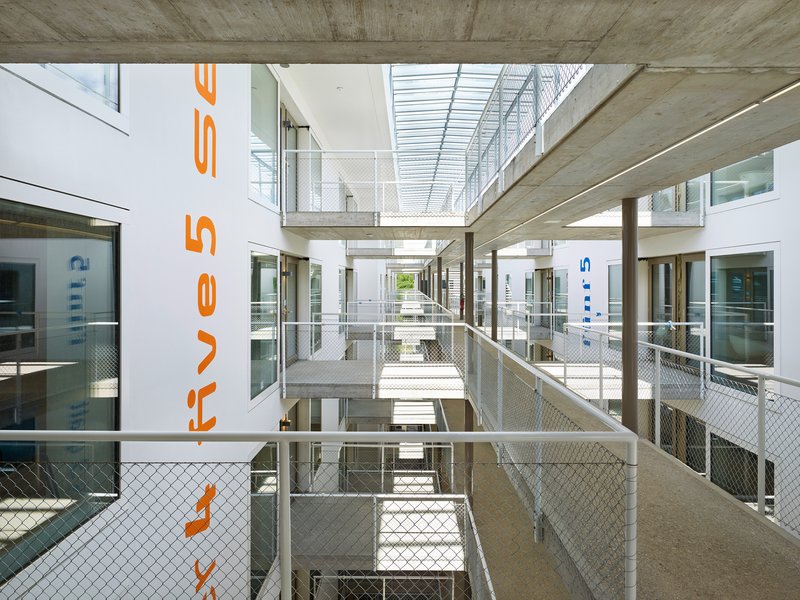Stuecheli Architekten
»Living Science« residential complex
best architects 18
multi-family homes
Place
Zurich / Switzerland
Studio
Photos
Hannes Henz
Description
With the completion of the apartments for students on the ETH Zurich Hönggerberg campus, one of the main aims of the »Masterplan Science City« has been achieved. For the first time the campus will be inhabited around the clock. A reference point for the compact residential development with its access balconies and atriums was the »Cité ouvrière« in Paris (1853). With a cubic capacity of approximately 12 m³/m², the density of the project is greater than that of Zurich’s old town. The residential development consists of four rows of flats in two blocks running from east to west, each of which has a central, open access system. The density of accommodations in the six- and seven-storey buildings decreases from the campus towards the open landscape, and the outdoor space develops along a succession of paths and courtyards with differing degrees of public accessibility. According to their orientation, the façades are either provided with strip windows optimised for solar gain or have a saw-blade-like form for privacy and protection against noise. The composite wood-concrete construction contributes significantly to achieving the required Minergie-P-Eco sustainability standard. Each design decision also took into account purely rational considerations. The various types of flats are all based on the same individual unit (including a wheelchair-accessible bathroom), which is integrated into shared flats or at least connected to the neighbouring community by means of common access paths. Despite the density of the development, the buildings provide a sense of privacy without isolation.

